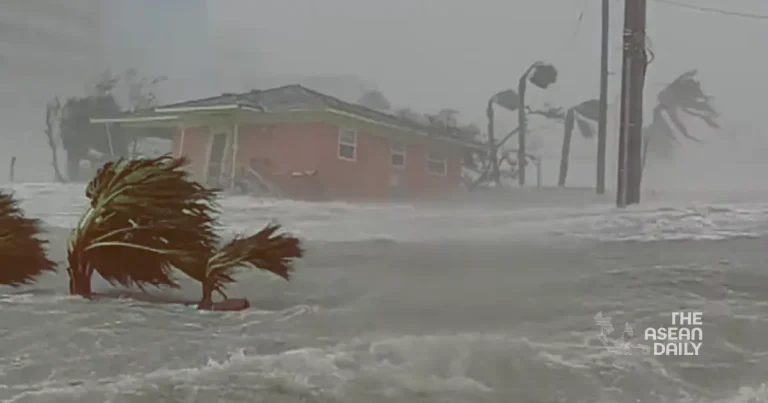27-9-2024 (FLORIDA) Hurricane Helene, one of the most potent storms to strike Florida in recent memory, made landfall in the state’s Big Bend region late Thursday, 26 September, unleashing its fury with winds reaching a staggering 130 mph (209 kph). The Category 4 hurricane’s arrival has sparked grave concerns about potential loss of life, widespread destruction, and unprecedented flooding, compounding the already severe deluge that preceded its landfall.
Even before Helene’s eye reached the coast, its outer bands had wreaked havoc across the Gulf Coast, plunging over a million Florida residents into darkness as power supplies faltered under the storm’s onslaught. The National Hurricane Center (NHC) has warned of a potentially catastrophic storm surge, with seawater pushed inland by hurricane-force winds potentially reaching heights of up to 20 feet (6.1 meters) in some areas – equivalent to a two-storey building.
Michael Brennan, the NHC’s director, painted a grim picture in a video briefing, describing an “unsurvivable scenario” unfolding in coastal areas. He warned of water levels capable of destroying buildings and sweeping vehicles far inland, emphasising the extreme danger faced by those who chose to stay behind.
The storm’s impact has already been felt far beyond Florida’s borders, with heavy rainfall lashing Georgia, South Carolina, central and western North Carolina, and parts of Tennessee. Even Atlanta, hundreds of miles north of the Big Bend, found itself under a tropical storm warning as Helene’s massive weather system expanded its reach.
Florida Governor Ron DeSantis solemnly announced late Thursday that the hurricane had claimed its first victim, though details were not immediately available. The governor’s statement underscored the gravity of the situation and the potential for further tragedy as the storm continues its destructive path.
In Pinellas County, a peninsula flanked by Tampa Bay and the Gulf of Mexico, roads were already submerged by midday. Local officials drew parallels to last year’s devastating Hurricane Idalia, which flooded 1,500 homes in the low-lying coastal area. Social media was awash with videos showcasing inundated beachside thoroughfares and rising waters engulfing boat docks.
HURRICANE HELENE
Breaking – Hurricane Helene is currently raging through Valdosta, Georgia #Georgia #flooding #florida #hurricanehelene #helene #tropicalstorm #hurricane #florida #helene #tropicalstormhelene #hurricanehelene #FLORIDA #helene2024 #Strom #Weather #TravelAlert… pic.twitter.com/JrZasOpoN0
— Abhay (@AstuteGaba) September 27, 2024
The storm’s approach forced the suspension of operations at airports in Tampa, Tallahassee, and St. Petersburg, further disrupting travel and evacuation efforts.
As Helene moves inland, it is expected to maintain its hurricane status as it barrels through the Macon, Georgia area on Friday. Forecasters predict up to 12 inches (30.5 cm) of rainfall, raising concerns about potentially devastating impacts on Georgia’s cotton and pecan crops, which are currently in the midst of harvesting season.
Georgia Governor Brian Kemp warned that Helene’s effects would likely be felt across the entire state, highlighting the storm’s far-reaching consequences.
The NHC projects that after its initial landfall, Helene will slow its pace as it traverses the Tennessee Valley on Friday and Saturday, potentially exacerbating flooding risks in affected areas.
As coastal communities brace for the worst, emergency services are on high alert, and residents who have chosen to stay behind are being urged to take extreme precautions. In a stark illustration of the danger, Taylor County Sheriff’s Department asked those ignoring evacuation orders to write their names and birth dates on their arms in ink to aid in identification should the worst occur.




